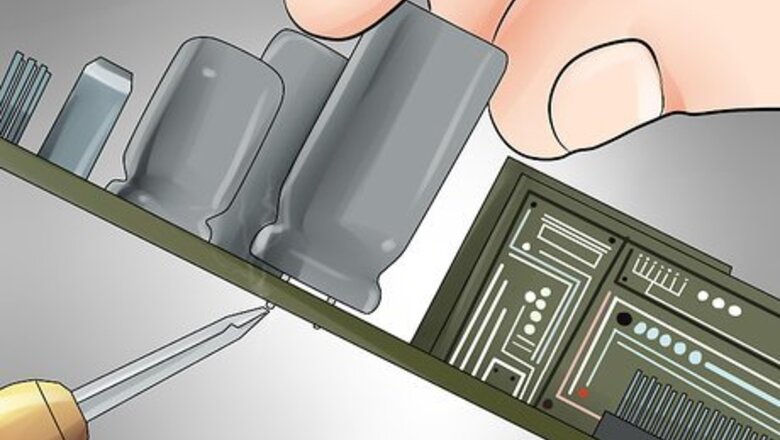
views
X
Research source
There are several ways to test a capacitor to see if it still functions as it should.
Using a Digital Multimeter With Capacitance Setting
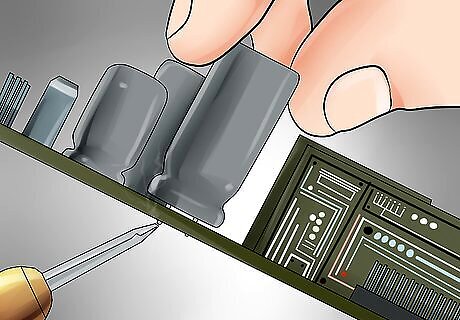
Disconnect the capacitor from the circuit it is part of.
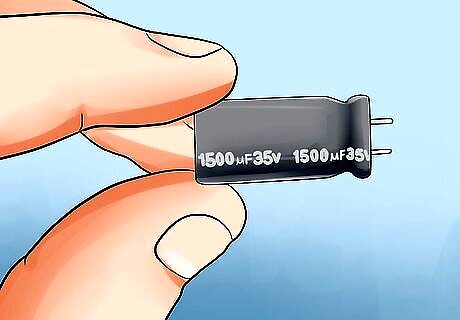
Read the capacitance value on the outside of the capacitor. The unit for capacitance is the farad, which is abbreviated with a capital “F.” You may also see the Greek letter mu (µ), which looks like a lowercase “u” with a tail in front of it. (Because the farad is a large unit, most capacitors measure capacitance in microfarads; a microfarad is a millionth of a farad.)

Set your multimeter to its capacitance setting. The capacitance symbol often shares a spot on the dial with another function.

Connect the multimeter leads to the capacitor terminals. Connect the positive (red) multimeter lead to the capacitor anode lead and the negative (black) lead to the capacitor cathode lead. (On most capacitors, especially electrolytic capacitors, the anode lead is longer than the cathode lead.) You might need to press a function button to activate a measurement.
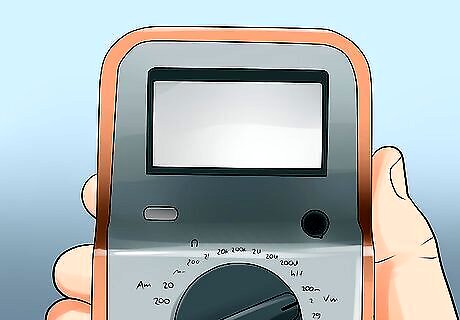
Check the multimeter reading. If the capacitance reading on the multimeter is close to the value printed on the capacitor itself, the capacitor is good. If it’s significantly less than the value printed on the capacitor, or zero, the capacitor is dead. Know which caps function or fail in a batch. "When several circuits in our electronics lab stopped working, I tested each capacitor using the multimeter technique. It was tedious but worth it — I identified the bad capacitors right away and replaced them. Now, our projects are back up and running thanks to this guide." - Brian C. Troubleshoot with basic tools. "As an electrician, having a fully stocked toolkit isn't always possible when making house calls. I've run into issues that required testing capacitors without my normal equipment. Using just a voltmeter and multimeter, I could follow the steps here to confirm whether the caps were still working. It's been a handy reference when I need to improvise." - Anthony C. See concepts click during a practical exam. "I struggled to grasp capacitor charging and discharging. But watching the voltmeter needle move when testing a capacitor made everything click! Doing the hands-on exercises broke the process down in a way lectures couldn't. I owe my passing grade on the electronics exam to this guide." - John T. Learn the cause of capacitor failure. "For years, the capacitors in my AC unit failed each summer. I replaced them, but it kept happening. When one finally leaked all over, I learned how heat damages electrolytic capacitors over time. Now I know to check and replace them annually before the cooling season starts. Could have saved myself money and headaches." - Emilio M. Have a story our readers should hear? Share it with 1 billion+ annual wikiHow users. Tell us your story here.
Using a Digital Multimeter Without Capacitance Setting
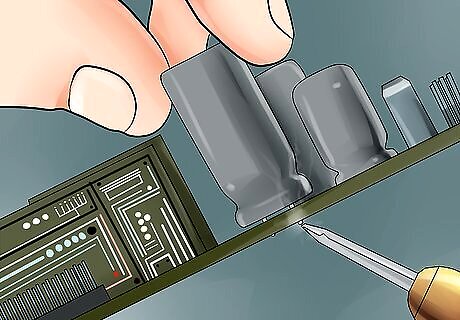
Disconnect the capacitor from its circuit.
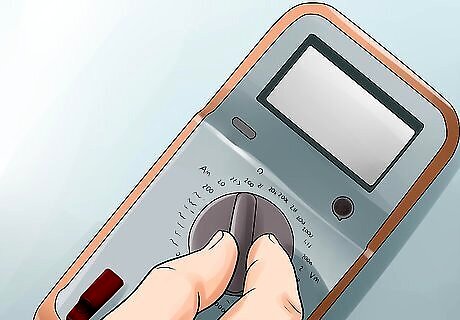
Set your multimeter to its resistance setting. This setting may be marked with the word “OHM” (the unit for resistance) or the Greek letter omega (Ω), the abbreviation for ohm. If your unit has an adjustable resistance range, set the range to 1000 ohm = 1K or higher.
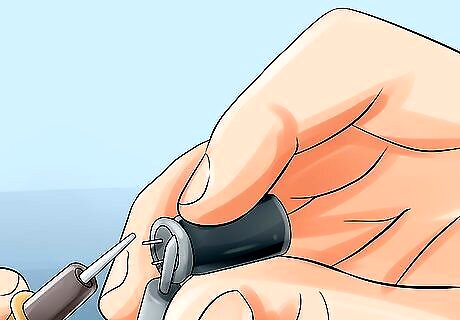
Connect the multimeter leads to the capacitor terminals. Again, connect the red lead to the positive (longer) terminal and the black lead to the negative (shorter) terminal.
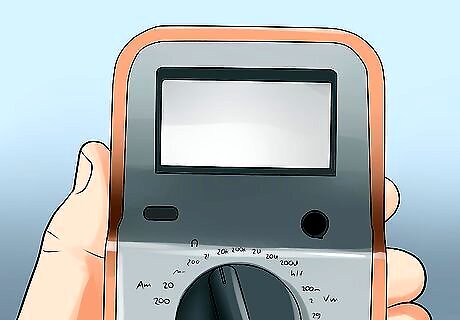
Observe the multimeter reading. Write down the initial resistance value, if you wish. The value should soon revert to what it was before you connected the leads.
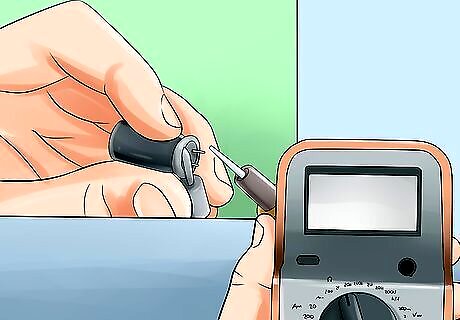
Disconnect and reconnect the capacitor several times. You should see the same results as on the first test. If you do, the capacitor is good. If, however, the resistance value does not change on any of the tests, the capacitor is dead.
Using an Analog Multimeter

Disconnect the capacitor from its circuit.
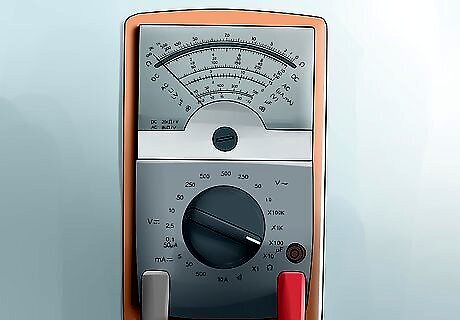
Set your multimeter to its resistance stetting. As with the digital multimeter, it may be marked “OHM” or with an omega (Ω).

Connect the multimeter leads to the capacitor terminals. Red lead to positive (longer) terminal, black lead to negative (shorter) terminal.
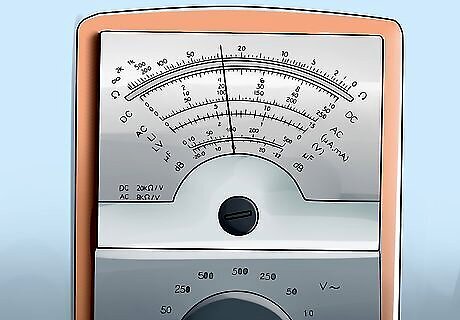
Observe the results. Analog multimeters use a needle to display their results. How the needle behaves determines whether or not the capacitor is good. If the needle initially shows a low resistance value then gradually moves towards infinity, the capacitor is good. If the needle shows a low resistance value and doesn’t move, the capacitor has been shorted out. You’ll need to replace it. If the needle shows no resistance value and doesn’t move or a high value and doesn’t move, the capacitor is an open capacitor (dead).
Testing a Capacitor With a Voltmeter
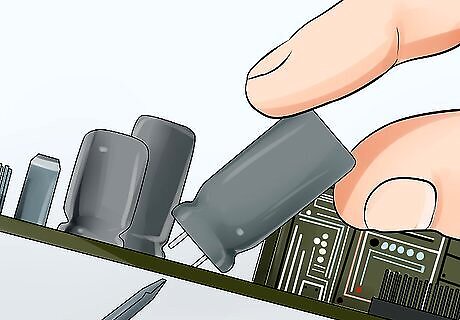
Disconnect the capacitor from its circuit. You may, if you wish, disconnect only 1 of the 2 leads from the circuit.
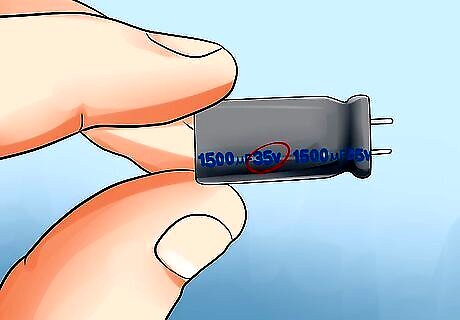
Check the capacitor’s voltage rating. This information should be printed on the outside of the capacitor as well. Look for a number followed by a capital “V,” the symbol for “volt.”
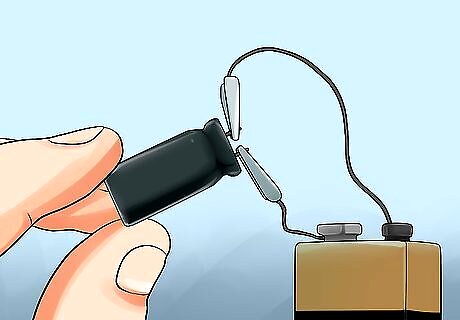
Charge the capacitor with a known voltage less than, but close to, its rated voltage. For a 25V capacitor, you could use a voltage of 9 volts, while for a 600V capacitor, you should use a voltage of at least 400 volts. Let the capacitor charge for a few seconds. Be sure to connect the positive (red) lead from the voltage source to the positive (longer) capacitor terminal and the negative (black) lead to the negative (shorter) terminal. The greater the discrepancy between the capacitor’s voltage rating and the voltage you’re charging it with, the longer it will take to charge. Generally, the higher voltage of the power supply you have access to, the higher the voltage ratings of the capacitors you can test with ease.
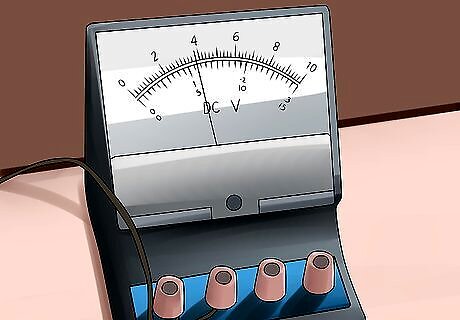
Set your voltmeter to read DC voltage (if it’s capable of reading both AC and DC).
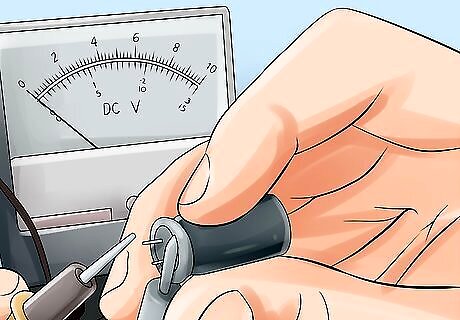
Connect the voltmeter leads to the capacitor. Connect the positive(red) lead to the positive (longer) terminal and the negative (black) lead to the negative (shorter) terminal.
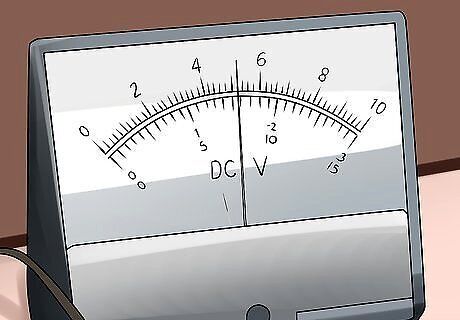
Note the initial voltage reading. This should be close to the voltage you supplied the capacitor with. If it isn’t, the capacitor is no good. The capacitor will discharge its voltage into the voltmeter, causing its reading to drop back to zero the longer you have the leads connected. This is normal. Only if the initial reading is much lower than the expected voltage should you be concerned.
Shorting the Capacitor Terminal
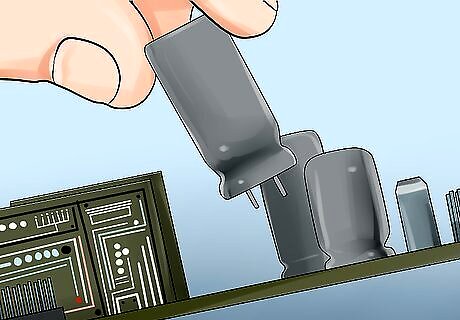
Disconnect the capacitor from its circuit.
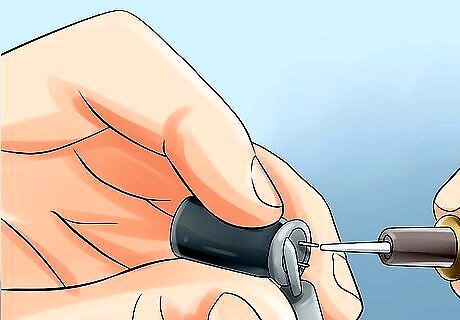
Connect leads to the capacitor. Again, connect the positive (red) lead to the positive (longer) terminal and the negative (black) lead to the negative terminal.
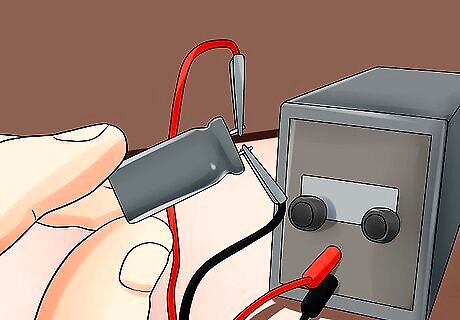
Connect the leads to a power supply for a short time. You should leave these connected for no longer than 1 to 4 seconds.
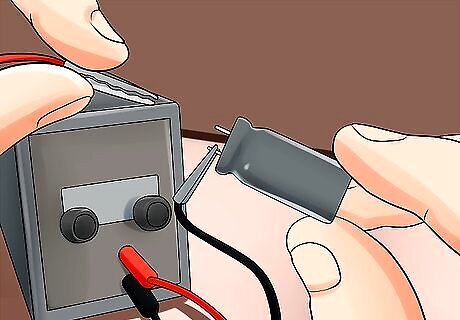
Disconnect the leads from the power supply. This is to prevent damage to the capacitor when you perform the task and to reduce the likelihood of your getting an electric shock.

Short the capacitor terminals. Be sure to wear insulated gloves and not to touch anything metal with your hands when you do this.

Look at the spark created when you shorted the terminal. The possible spark will give you an indication of the capacity of the capacitor. This method will only work with capacitors that can hold enough energy to produce a spark when shorted. This method is not recommended because it only can be used to determine if the capacitor can hold a charge, capable of sparking when shorted, or not. It can not be used to check if the capacity of the capacitor is within the specifications. Using this method on larger capacitors could result in serious injury or even death!




















Comments
0 comment